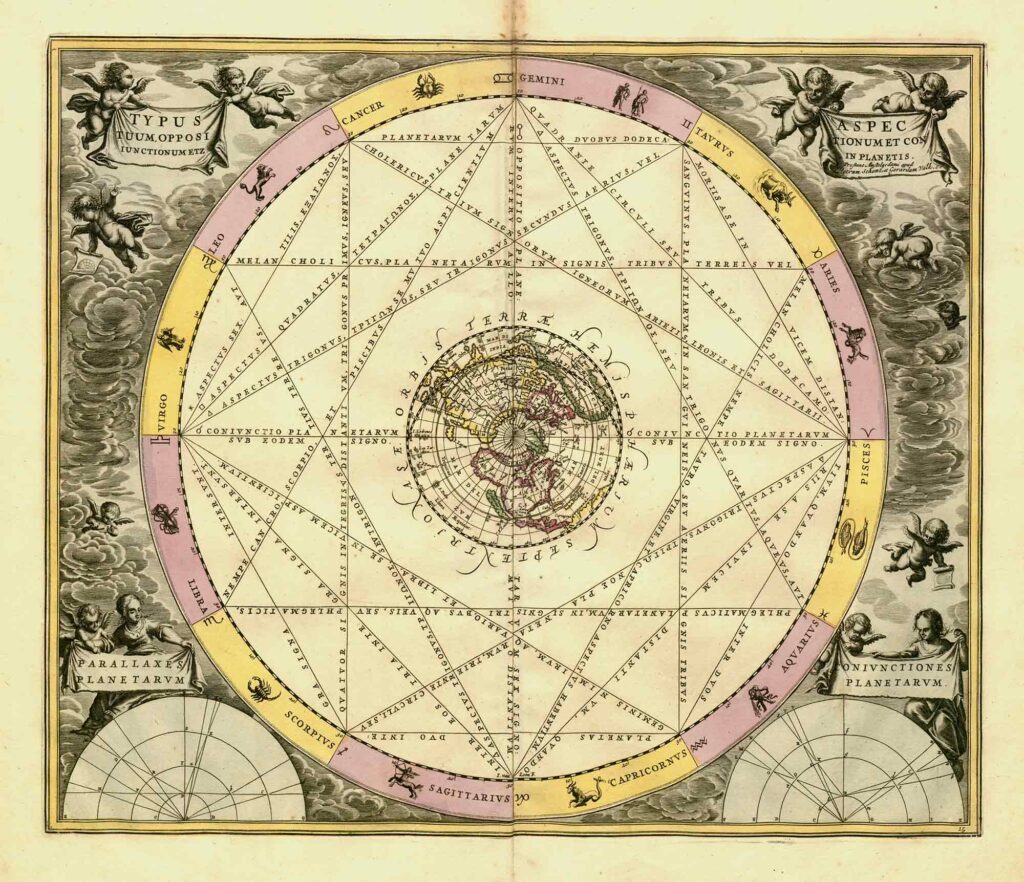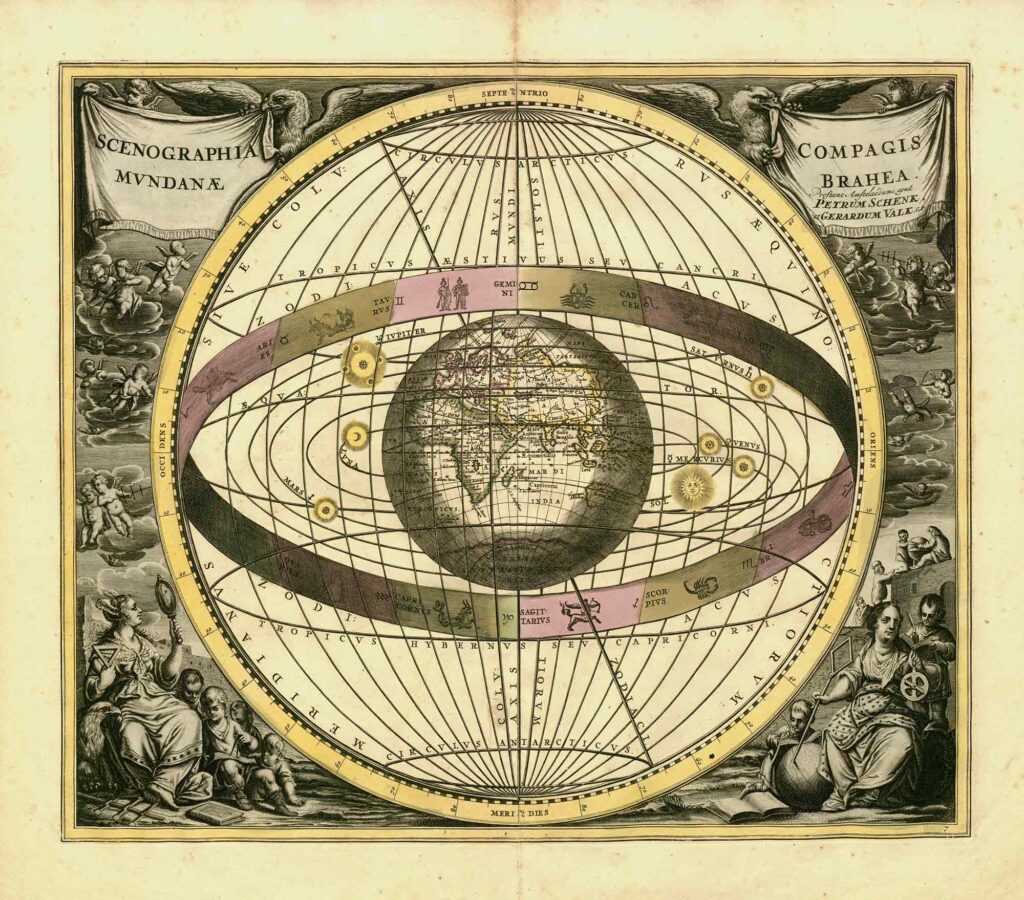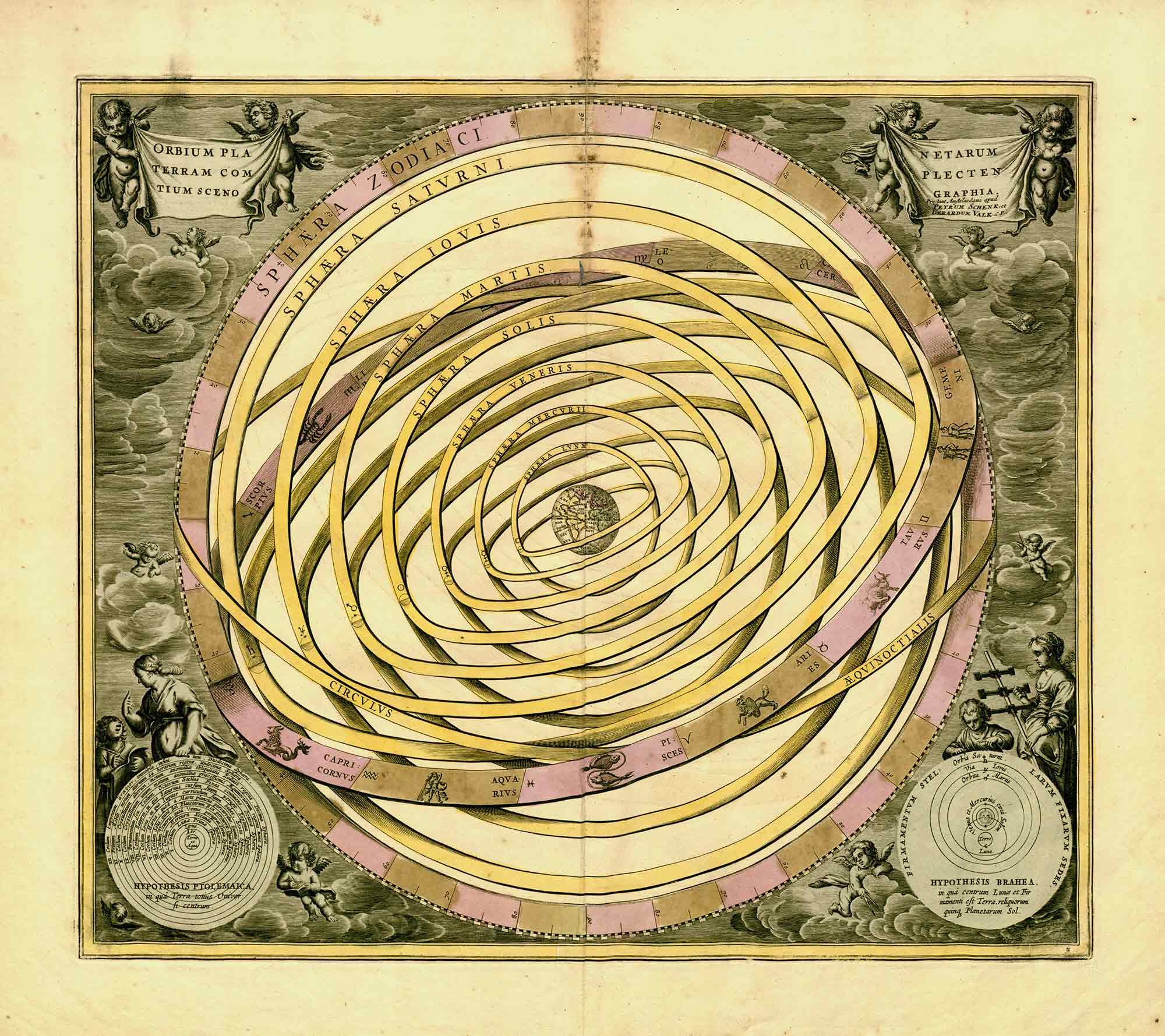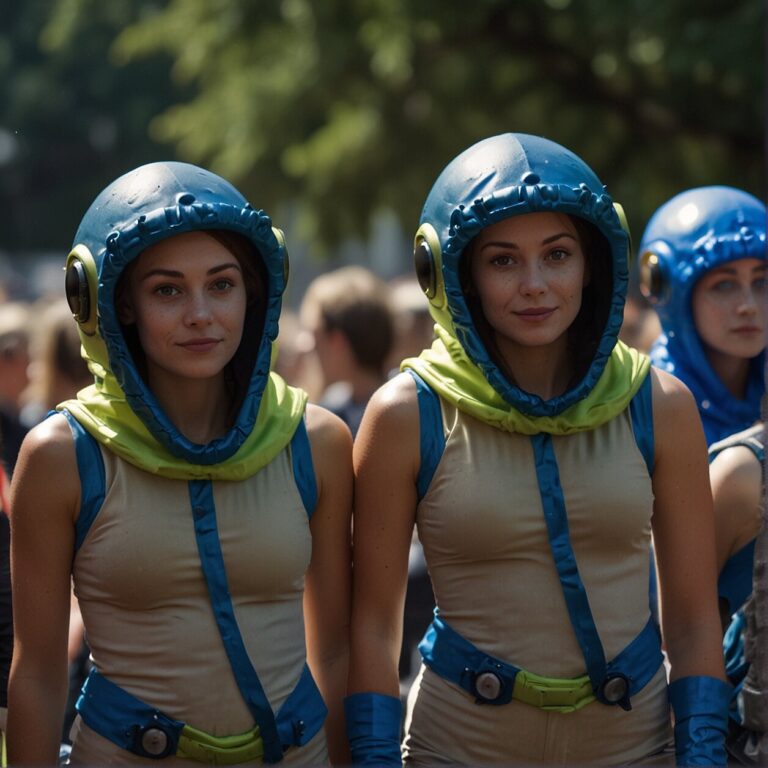What do we know about Andreas Cellarius, the creator of the Harmonia Macrocosmica?
If you’ve ever found yourself captivated by the intricate details of a celestial map, then you’ve likely admired the work of Andreas Cellarius. Today, we’re set to explore the marvels of one of his most significant creations – the Harmonia Macrocosmica. This masterpiece is not just a collection of celestial maps, but a testament to the genius of its creator, a man deeply enthralled by the cosmos.
Before we delve deeper, let’s take a moment to appreciate the enormity of Cellarius’ contribution. The Harmonia Macrocosmica is a star atlas that has continued to mesmerize scholars, artists, and star-gazers for centuries. But who was the man behind the masterpiece? What motivated him to undertake such an ambitious project? And most importantly, what secrets does the Harmonia Macrocosmica hold within its beautifully illustrated pages?
“Andreas Cellarius, an artist turned cosmographer, brought the heavens to the Earth through his meticulously crafted celestial maps, encapsulating the scientific knowledge and cosmological understanding of his era.”
Exploring Andreas Cellarius’ Background and Influences

Andreas Cellarius, a name that reverberates through the annals of astronomy and cartography, remains an enigmatic figure that we continue to learn about. This elusive cartographer, whose magnum opus, the Harmonia Macrocosmica, marvels scholars and enthusiasts alike even today, was a product of his time, shaped by the philosophical and scientific paradigms of the 17th century.
Cellarius’ astronomical prowess cannot be considered in isolation. His work was unmistakably influenced by the astronomical ideas that preceded him. Copernican heliocentrism, Ptolemaic geocentrism, and Tycho Brahe’s geo-heliocentric model all feature prominently in the Harmonia Macrocosmica. This encapsulation of diverse cosmological systems is testament to Cellarius’ dedication to presenting a comprehensive view of the known universe. But who were the intellectual giants on whose shoulders this gifted cartographer stood?
Who was Andreas Cellarius?
Picture yourself immersed in the seventeenth century, a time when the universe was still largely a mystery. Now, imagine a figure piercing through this veil of the unknown, his name echoing down the corridors of time – Andreas Cellarius. This extraordinary individual was not just a mere mortal, but a master of multiple disciplines. As an accomplished mathematician, an insightful cosmographer, a devoted schoolmaster, and above all, a supremely skillful cartographer, Cellarius was a beacon of knowledge in an epoch of exploration and discovery. His unique blend of intellect and artistry enabled him to create celestial charts that were not only scientifically significant but also visually breathtaking. Can you envision the awe-inspiring magnificence of his creations? Such was the legacy of Cellarius, a true maestro whose work continues to inspire and captivate us to this very day.
Upon hearing the name Andreas Cellarius, one could not help but envision the magnificent celestial atlas, the Harmonia Macrocosmica. His work revolutionized how humanity perceived the cosmos, intertwining intricate details and scientific accuracy with a pure aesthetic charm that continues to fascinate researchers, historians, cartographers, and art enthusiasts alike.
Cellarius lived during a transformative period of scientific discovery and intellectual exploration, characterized by the European Scientific Revolution. His life and work reflected the intellectual ferment of the time, with his celestial atlas representing a pinnacle of astronomical thought and artistic representation. It was an era marked by a fervent desire to understand the world beyond our own, a world that was being slowly unraveled by the pioneering work of minds like Cellarius.
Despite his significant contributions to astronomy and cartography, Cellarius’ life was not entirely devoted to these disciplines. He was a schoolmaster by profession, imparting mathematical knowledge to young minds in the town of Hoorn in the Netherlands. Behind the stern gaze of the teacher, however, lay the passionate heart of a cosmographer, relentlessly charting the heavens in his spare time.
Adults and children who were fortunate enough to learn under his guidance witnessed firsthand his dedication to the advancement of learning. They, too, became part of the rich tapestry of Cellarius’ life, influencing and being influenced by his passion for the celestial world. Undoubtedly, it is this unique blend of pedagogical commitment and astronomical fervor that made Cellarius the fascinating figure we revere today.
When was Andreas Cellarius born?
In the annals of history, certain dates hold immense significance, as they mark the advent of uniquely influential individuals. Andreas Cellarius, too, was born on one such special day – the 10th of November, 1596. This date, nestled at the cusp of the 16th and 17th centuries, was a time when the world was in the throes of momentous changes.
One might ask, “How was the world in 1596? What were the prevalent dynamics?” Well, the year 1596 was an era of burgeoning knowledge and exploration. The Renaissance was in full swing, bringing forth a deluge of new ideas and discoveries. This period of enlightenment and exploration, undoubtedly, had a profound impact on the young Cellarius, shaping his thirst for knowledge and his passion for celestial cartography.
Can we perhaps perceive the celestial mappings of the Harmonia Macrocosmica as a reflection of the intellectual curiosity and spirit of discovery that defined the era of his birth? This is a thought that could merit contemplation, allowing us to better understand the motivations and inspirations behind Cellarius’ magnum opus.
Where was Andreas Cellarius born?
Let us, dear reader, embark on a journey to the birthplace of Andreas Cellarius – a place that perhaps played a significant role in shaping the man who would create one of the world’s most celebrated celestial atlases. Indeed, where was this great mind born? A question that would lead us to the heart of Europe.
Born in 1596, our esteemed subject, Andreas Cellarius, first drew breath in Neuhausen, a picturesque town located near Worms, in the Rhineland-Palatinate region of present-day Germany. It was a place and time steeped in the profound intellectual ferment of the Reformation, which may well have nurtured Cellarius’ inquisitive nature and passion for the heavens.
Neuhausen, though small in size, was a thriving hub of culture and knowledge during the late Renaissance, a place where intellectual curiosity was encouraged and rewarded. It is not difficult to imagine young Cellarius, surrounded by the wonders of the natural world and the mysteries of the heavens, beginning to develop the fascination for the stars and planets that later defined his life’s work.
Let us linger for a moment on the significance of this birthplace. Could the clear skies of the Rhineland-Palatinate region have provided the perfect canvas for a young Cellarius to gaze upon the cosmos? Could the intellectual atmosphere of Neuhausen have fanned the flames of his curiosity? While it is impossible to know for certain, one can’t help but marvel at the confluence of circumstances that brought forth such a remarkable individual.
So, as we delve deeper into the life and work of Andreas Cellarius, let us keep in mind the vital role that his birthplace likely played in his development. Neuhausen, a small town with a big impact, shaping the mind of the man who would go on to create the Harmonia Macrocosmica.
A Glimpse into Andreas Cellarius’ Daily Life
Imagine what life was like in the 17th century, particularly for a cosmographer like Andreas Cellarius. While we may not have precise day-to-day accounts, we can begin to piece together a tapestry of his existence through the lens of historical context and his contributions to the world of science and art. What might a typical day have looked like for this notable figure?

As an intellectual of his era, Cellarius’ daily routine likely involved a blend of study, teaching, and research. At the time, he was known to be a school rector, so one could imagine him, poring over books and manuscripts, preparing lectures for his students, and engaging in spirited intellectual discourse. One might ponder, how did he balance these responsibilities with his passion for cosmography? Surely, the creation of the Harmonia Macrocosmica required a significant investment of time and energy.
An important factor to consider is the era in which Cellarius lived. The late 17th century was a time of tremendous intellectual ferment. The Scientific Revolution was in full swing, and new ideas were challenging old assumptions about the nature of the universe. This was the age of Galileo, Kepler, and Copernicus, and their ideas were undoubtedly the topic of many a discussion in the halls of academia where Cellarius would have spent his days.
What were his personal habits, you might wonder? Again, despite the absence of precise details, we can make some educated guesses based on the times. It’s plausible to assume that Cellarius, like many scholars of his era, led a life of modest comfort and rigorous discipline. His work would require patience, meticulous attention to detail, and an insatiable curiosity about the universe.
Certainly, a significant portion of his day would have been dedicated to the creation of his most famous work, the Harmonia Macrocosmica. This masterpiece didn’t materialize overnight. It would have required countless hours of painstaking work – drawing, calculating, revising – all done by candlelight with the aid of simple tools and instruments.
Ultimately, it’s a fascinating exercise to ponder what life was like for Andreas Cellarius, a man whose work continues to illuminate our understanding of the universe and the historical progression of cosmographical knowledge. It serves to remind us of the dedication, passion, and intellectual curiosity that has driven human progress throughout the centuries.
Unlocking the Secrets of the Harmonia Macrocosmica’s Iconography
As we delve deeper into the intriguing world of Andreas Cellarius’ Harmonia Macrocosmica, we find ourselves at the threshold of awe-inspiring iconography which, despite being hundreds of years old, still holds profound significance today. But what are the secrets lying within the complicated patterns and designs of the Harmonia Macrocosmica? Let’s unlock them together.

A Testament to Cellarius’ Brilliance
First and foremost, the harmonious complexity of the iconography in the Harmonia Macrocosmica stands as a testament to Cellarius’ brilliance as an artist and an astronomer. Each celestial chart not only presents an accurate (for its time) representation of the cosmos, but also incorporates a stunning array of decorative elements that capture the grandeur and mystery of the universe.
The Use of Classical Imagery
Cellarius’ iconography drew deeply from classical imagery. He regularly incorporated figures from Greek and Roman mythology into his star charts, using them to represent the constellations and celestial bodies. This gave his work a dual function: it was not only a scientific document but also a work of art, rich in allegory and symbolism.
The Depiction of Diverse Cosmological Systems
The Harmonia Macrocosmica stands out in its depiction of diverse cosmological systems. Cellarius didn’t just present the Copernican view of the universe, with the sun at the center; he also depicted the Ptolemaic system (with the Earth at the center) and the Tychonic system (which combined elements of the other two). This cosmographical pluralism is not only scientifically interesting, it also adds to the rich visual tapestry of the work.
The Significance of the Marginalia
Equally fascinating is the marginalia, or the images and text that appear in the margins of the Harmonia Macrocosmica. These often include additional celestial diagrams, annotations in Latin, and elaborately drawn depictions of celestial phenomena such as comets or eclipses. These were designed not merely to fill space, but to provide additional context and information to the viewer, further enhancing the richness and depth of Cellarius’ work.
Indeed, the intricate iconography of the Harmonia Macrocosmica reveals much about the worldview of its creator, and the era in which he lived. It reminds us that Cellarius was not just a man of science, but also a man of the arts – a true Renaissance man, whose work continues to inspire and educate us. Isn’t it a thrilling journey, to unlock the secrets of this fascinating piece of astronomical history?
Conclusion
In conclusion, through this exploration of Andreas Cellarius’s life and works, we can clearly see his enduring impact on the realm of cosmography. The unparalleled artistry and precision evident in the Harmonia Macrocosmica not only reflect Cellarius’s deep understanding of diverse cosmological systems but also his relentless pursuit of knowledge.
One cannot overstate the impact of the classical imagery he employed, which served to bridge the gap between the ancient and contemporary understanding of the universe. This, along with the use of marginalia, was a testament to his genius and ingenuity.
Furthermore, we’ve glimpsed the world through the lens of an exceptional scholar of the late Renaissance, and remind ourselves of the importance of the pursuit of knowledge, both for its own sake and for the enrichment of humankind.
It is clear that Cellarius’s contribution to our understanding of the cosmos transcends time. His works continue to inspire and illuminate, serving not only as a window into the past but also as a beacon for future explorations into the universe’s mysteries.
Indeed, one might ask: What other secrets might the Harmonia Macrocosmica still hold? What further insights could these celestial charts offer to the inquisitive minds of the future? As we continue to probe the mysteries of the cosmos, the Harmonia Macrocosmica remains a testament to the enduring power and beauty of human curiosity and creativity.
Andreas Cellarius, the man behind the masterpiece, once walked on this Earth, looked up at the stars, and dared to depict the Cosmos. We, the bearers of his legacy, are left with a sense of profound gratitude and a challenge to keep exploring, questioning, and seeking understanding, just as he did.







